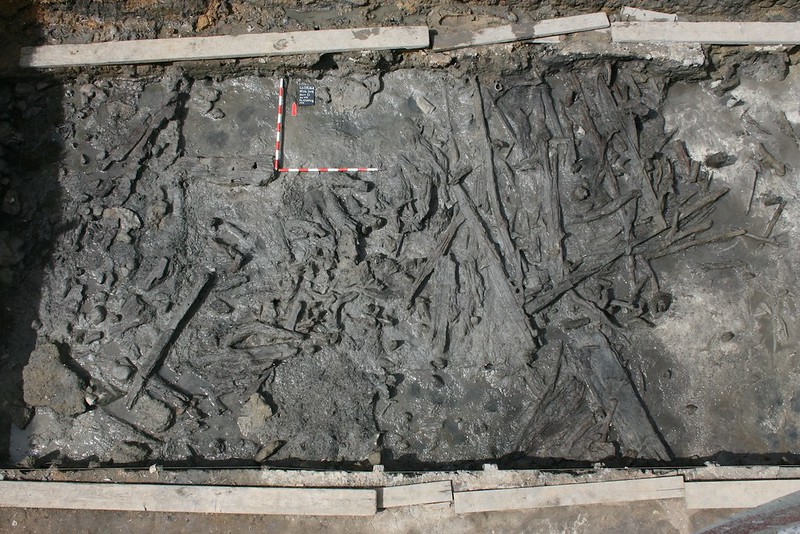
In a recent discovery, archaeologists found ancient neolithic structures dating back a whopping 7,300 years at the La Draga archaeological site. This site is situated by a lake in the city of Banyoles in northeastern Catalonia, Spain.
La Draga was initially discovered in 1990. It turned out to be an old settlement from the Early Neolithic Cardial period. This means people around the end of the sixth millennium BC inhabited it.
Significance of Spain’s La Draga Neolithic Structure
In a recent archaeological dig, substantial and excellently preserved wooden structures were unearthed. This was led by the Catalan Institute of Human Paleoecology and Social Evolution (IPHES-CERCA) in partnership with the Autonomous University of Barcelona (UAB); the Superior Council for Scientific Research (CSIC-IMF Barcelona); the Museum of Archaeology of Catalonia (MAC); and the Centre for Archaeology Underwater of Catalonia (CASC).
The constant moisture and unique conditions of the La Draga site, which lack oxygen and are waterlogged, have enabled the preservation of organic materials. This makes La Draga a site of immense significance for the study of the European Neolithic era.
The research project’s co-directors, Toni Palomo, Raquel Piqué from the Autonomous University of Barcelona (UAB), and Xavier Terradas from CSIC-IMF Barcelona, have revealed:
There are mainly large wooden planks more than three [meters] long that occupy practically the entire surface of the excavated area. The excavation process should allow us to make very precise interpretations of the shape of these structures, the construction techniques, and the time of their construction, as well as their relationship with areas excavated in previous campaigns.
Archaeological and palaeoecological surveys
The research team has undertaken archaeological and palaeoecological surveys on the western shoreline of the lake both on land and underwater. Their primary aim is to piece together the environmental changes that occurred at the Banyoles Lake throughout the Holocene epoch and confirm the potential existence of additional prehistoric evidence of human habitation.
Newgrange, a prehistoric monument located in County Meath, Ireland. It is one of the most iconic Neolithic structures in Europe. This ancient passage tomb dates back to around 3200 BC, making it older than Stonehenge and the Great Pyramids of Giza. It consists of a large circular… pic.twitter.com/VCMEjeVgZn
— Archaeo – Histories (@archeohistories) October 9, 2023
Dr. Jordi Revelles, a postdoctoral researcher at IPHES-CERCA, remarked, “The investigations we’ve conducted have yielded valuable insights for reconstructing the prehistoric environment. These findings help us better understand what the environment was like in ancient times.”
Financing of the project
The ongoing archaeological excavation campaign for neolithic structures is a crucial component of a comprehensive four-year research project beginning in 2022 and lasting until 2025. It has received approval from the General Directorate of Cultural Heritage in Spain.
Various entities, including the Archaeological Museum of Banyoles, the Department of Culture of the Generalitat de Catalunya, the CSIC, the UAB, the MAC, and the Ministry of Science and Innovation generously provide funding for the dredge excavations and associated research endeavors.